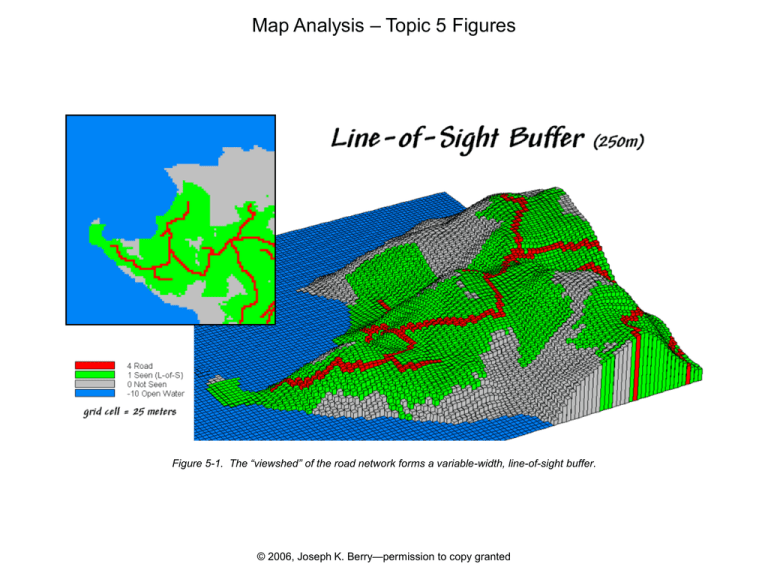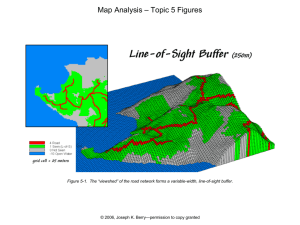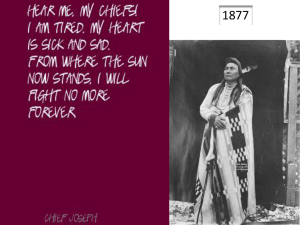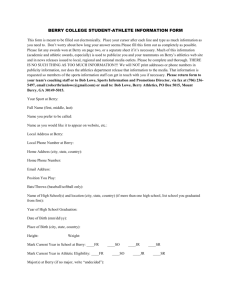Topic 5
advertisement

Map Analysis – Topic 5 Figures Figure 5-1. The “viewshed” of the road network forms a variable-width, line-of-sight buffer. © 2006, Joseph K. Berry—permission to copy granted Map Analysis – Topic 5 Figures Figure 5-2. A “visual exposure” map identifies the number of times each map location is visually connected to an extended map feature. © 2006, Joseph K. Berry—permission to copy granted Map Analysis – Topic 5 Figures Figure 5-3. A “noise buffer” considers distance as well as line-of-sight connectivity. © 2006, Joseph K. Berry—permission to copy granted Map Analysis – Topic 5 Figures Figure 5-4. Viewshed of all surface water locations. © 2006, Joseph K. Berry—permission to copy granted Map Analysis – Topic 5 Figures Figure 5-5. Example calculations for determining visual connectivity. © 2006, Joseph K. Berry—permission to copy granted Map Analysis – Topic 5 Figures Figure 5-6. Introducing visual screens that block line-of-sight connections. © 2006, Joseph K. Berry—permission to copy granted Map Analysis – Topic 5 Figures Figure 5-7. Identifying the “viewshed” of the road network. © 2006, Joseph K. Berry—permission to copy granted Map Analysis – Topic 5 Figures Figure 5-8. Calculating simple and weighted visual exposure. © 2006, Joseph K. Berry—permission to copy granted Map Analysis – Topic 5 Figures Figure 5-9. Determining the visual exposure/impact of alternative power line routes. © 2006, Joseph K. Berry—permission to copy granted Map Analysis – Topic 5 Figures Figure 5-10. Calculating visual exposure for two proposed power lines. © 2006, Joseph K. Berry—permission to copy granted Map Analysis – Topic 5 Figures Figure 5-11. Determining visual impact on local residents. © 2006, Joseph K. Berry—permission to copy granted Map Analysis – Topic 5 Figures Figure 5-12. Determining visible portions of a proposed power line. © 2006, Joseph K. Berry—permission to copy granted

![Title of the Presentation Line 1 [36pt Calibri bold blue] Title of the](http://s2.studylib.net/store/data/005409852_1-2c69abc1cad256ea71f53622460b4508-300x300.png)









